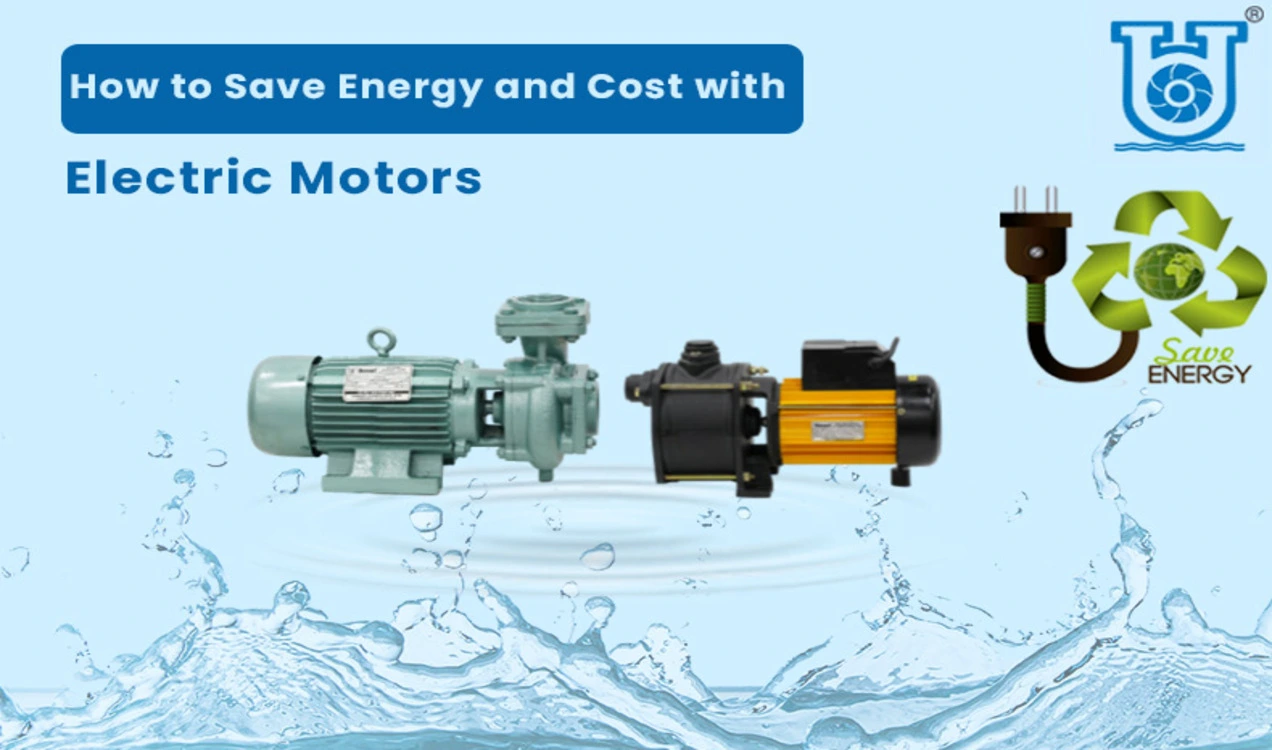Electric motors are among the most commonly used construction and electrical materials in residential, commercial, and industrial applications. However, if they are ineffective or improperly maintained, they could also be a significant financial burden, unplanned downtime, low energy efficiency and extended component lifespan.
What is Electric Motor?
An electric motor converts electrical energy into the mechanical energy. From everyday tools to heavy industrial machinery, mechanical energy can be used to power everything. Here are a few factors you need to consider while purchasing the electric motor:-
- Size
- Environment
- Performance
- Ambient Heat
- Maintenance
- Energy-efficient regulations
- Maintenance
Tips to Save Money and Cost with Electric Motors:
Here are a few tips about improving efficiency and saving money on your electric motors.
1. Regular Inspection:
Low resistance is the main reason for motor failure. This happens when the windings’ insulation deteriorates due to unfavourable circumstances like overheating, corrosion, or physical damage. It causes insufficient separation between the windings, leaks, and short circuits, and ultimately leads to motor let-downs.
By routinely inspecting the insulation for signs of wear, you can maintain your electric motor’s top performance and prevent machine failure.
2. Correct Size:
Any motor that operates at or close to full-load conditions is at maximum efficiency. For the application, experts advise utilising a somewhat bigger motor. This gives you a little extra capacity when you need it while extending the life of the motor. Re-evaluate the performance of any very large motors you are using, and consider installing energy-saving controls.
3. Invest in Efficient Motors:
Consider a high-efficiency replacement if you have an old electric motor that is operating all the time. Unnati Pumps Pvt Ltd. offers high-performance, latest and premium submersible motors and other water appliances that are designed to save energy and money.
4. Protect against Contamination:
Electric motors frequently work in contaminated environments with dust, grime, or chemicals. Despite this, it is crucial to ensure that electric motors are properly shielded since corrosion is one of the vital causes of motor failure.
Keep work environments, tools, and fixtures as clean as possible to reduce the likelihood of contamination coming into contact with the motor. It is also beneficial to keep motors away from grinding machines and other machines that generate a lot of contagions.
As a result, there is less chance for contaminants to enter the motor, maintaining maximum efficiency and lowering the risk of equipment failure.
5. Understand the Energy Use:
Electric motors are tools for converting energy; it happens by transforming electrical energy into heat and rotational energy. Understanding the distinction between motor load [opposing force (torque)] and motor speed [rotational speed] is crucial. Load and speed affect a motor’s energy consumption. Slow motors with heavy loads use more energy than fast motors without loads.
6. Variable or Fixed Speed:
Consider which applications are on variable speed, or remain on fixed speed and where the pace may be reduced. The decreasing rate will not necessarily lead to lower energy usage in some applications. For instance, reducing a conveyor system’s speed by half simply results in the conveyor moving the same quantity of material twice as slowly.
7. Reduce Wear and Tear:
Downtime is the plant operator’s second-biggest expense after energy expenditures. When an electric motor starts, a lot of wear happens because the strong early currents and forces exert a lot of stress on the mechanical and electrical systems. Soft Starters should be utilised in all fixed-speed applications to lessen the negative impacts, which will also increase the lifespan.
8. Vibration:
An uneven or unstable surface frequently contributes to vibration in electric motors. However, an underlying issue like a loose bearing, corrosion, or misalignment could also be the reason behind it. Monitoring vibration levels is crucial since excessive vibration might hasten the failure of the motor.
9. Maintain the Motor Drives:
Variable frequency drives, also known as VFDs, are a common way to improve the energy efficiency of electrical systems. With the help of these motor drives, you may change electrical energy into mechanical energy while controlling speed and torque.
Up to 55% in energy cost savings are possible with a properly maintained VFD, however this requires regular maintenance. Delaying routine maintenance runs the risk of a catastrophic system failure, which may necessitate a complete drive or motor replacement.
Conclusion:
Since “energy efficiency” is quickly becoming a trendy buzzword, this idea must be applied to general household and business practices. Energy-efficient motors can provide a lot of advantages. They can operate more quietly, offer better insulation, last longer, deliver higher service standards, and generate less noise and vibration with proper installation.
Are you looking for a cost-effective and efficient Borewell motor, submersible water motor or any other electric water motor pump? Then you are at the right place. Unnati Pumps Pvt Ltd. is a top submersible motor brand in India. Connect with us to know more about our wide assortments of pumps and motors.


